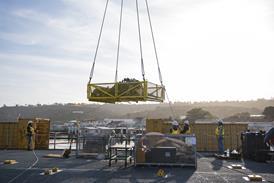First, the good news. According to an official report, most of the runways in the US national airport system are in good to excellent condition. The bad news is that this may not be good for the airports.
It will not be good news if the report, compiled by the US General Accounting Office, leads to a complacency that could ultimately prove expensive. According to the GAO, the cost of keeping those runways in good condition over the next 10 years will exceed the $162 million historically spent each year on maintenance under the Federal Aviation Administration's Airport Improvement Programme (AIP). And repairing runways once they have fallen into disrepair is much more costly.
It is also not good news - at least not for the many airport managers who are anxious to see funding increased - because the report has been delivered to the chairman of the Senate commerce and transportation committee, Senator John McCain. Its sense of non-urgency will dull the edge of the Airport Council International's campaign for more money. That campaign suffered a serious setback earlier this year when McCain's committee refused to raise the $3 cap on the passenger facility charge (PFC) because it saw no overwhelming need for another tax hike to be hoisted onto the airline pasenger.
The PFC is a lucrative source of income for USairports, raising more than $1 billion for airport capital programmes each year. It holds a particular appeal because airport managers are free to spend it as they wish - and most wish to invest in terminal expansion plans. The ACI was calling for the PFC cap to be raised to $6, claiming such a hike was needed to help raise the $60 billion required to upgrade ageing airports and enable them to cope with projected passenger growth. The number of scheduled passengers is expected to climb from about 600 million today to 1 billion by 2008.
But the airlines have an intense dislike for the PFC, introduced in 1992 as a tax wrapped into the price of a ticket, and they successfully fought the attempt to have it doubled.
The GAO report highlights the fact that the picture on tarmacs across the US is generally a bright one with a few black spots. The study, using a database that covers 35 per cent of the 547 airports in the FAA's national system, shows that 77 per cent of those runways are in good to excellent condition. Another 11 per cent rate fair and a 'small, but significant' 12 per cent are rated poor or below standard.
But maintaining and improving on that position will cost more than has been traditionally spent each year, warns the GAO. Over the next 10 years, it is estimated that $1.4 billion - five times the current level of spending on runway repair systemwide - will be needed, with as much as $774 million being spent in the first year alone to bring poor runways up to scratch.
The danger lies in ignoring this message. 'Timing is key in making the dollars spent on rehabilitation projects work the hardest,' points out Gerald Dillingham, the GAO's associate director, transportation issues. 'Two airports - one with moderately deteriorated runways, the other with runways in much worse condition - may both need rehabilition projects. But the project at the airport with runways in better shape is likely to cost only a fraction of the cost of the other airport's project.'
The GAO reckons that if funding from the AIP remains at about $162 million for runway projects, the shortfall will skyrocket to $2.37 billion after 10 years because of the additional expense of addressing problems that would not exist if tackled now.
It will be difficult for that message to shake down, however. The GAO also points out that while the FAA - which administers the AIP - has a priority system for grant applications, it does not have an accurate, consistent source of information about detailed runway conditions at all airports. Such information is gathered during inspections, but fewer than half of the airports in the national system elect to be inspected. 'The FAA's priority system is not well equipped to determine which proposed rehabilitation projects will deliver the best return for dollars spent,' concludes the GAO.
Ironically, as most concern is focused on smaller airports, the GAO seems bewildered by its discovery that there has been almost no interest in a pilot programme, launched in 1996, under which the FAA can provide pavement maintenance grants to nonprimary airports. The FAA has so far only awarded seven grants. Dick Marchi, senior vice president of technical and environmental affairs at the ACI, suggests the lack of interest may stem from a reluctance to become involved in what is still regarded as an 'experimental' programme. Managers are suspicious that such projects will involve a lot of time-consuming paperwork for relatively little return. 'It is regarded as a tortuous and constrained process,' says Marchi.
Had this report focused on infrastructure away from the air field, and the pilot programme offered grants that could be used for something sexier than mere tarmac, both might have been greeted with considerably more interest. As it is, the FAA - still struggling to unwind itself from its old bureaucratic ways and with more priorities than it has funding for - might be tempted to regard the GAO's report as a piece of generally good news that allows it to procrastinate worry about this particular area of responsibility.
The ACI, meanwhile, welcomes the report's point that money spent now could save billions of dollars later, but its chief focus is on terminal buildings and getting the PFC raised next year so that it can make those investments.
What is the betting that in ten years time, despite the warnings contained in this report, the GAO could be publishing a similar study, but one that describes an imminent crisis on the runways across the US? And that would be bad news for all.
Source: Airline Business























